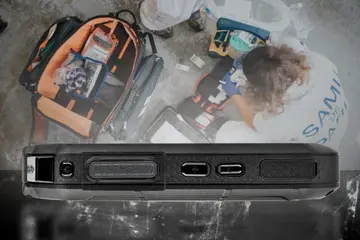Mission Critical Broadband
Mission Critical services has been efficiently running on narrowband such as TETRA and Digital mobile radio (DMR) ) for a long time. However, in recent years there has been an increased demand for data in the Mission Critical scene. What is due to?
The need to keep up with technology and being able to fight the most advanced crime has impacted the mission critical sector.
This has, therefore, increased the need for fast speed mobile data.
What is impacting data consumption?
There are several elements that are impacting how mission critical communication are now performed.
One of these elements is the introduction of new applications and device technology, to help improve operation efficiency. The shift to LTE has, as direct effect, a mobile data increase.
The improved operation efficiency is also required to reduce current costs. As a way of doing this, we have seen an improvement in operations and productivity with the introduction, for instance, of mobile offices – now possible thanks to mobile data.
Improved safety for both the first responders and the citizens, has been possible by implementing new technology that allows faster identification of issues – also internet based.
Furthermore, the introduction of the next Generation Emergency Response, including multimedia emergency calls and sessions, the integration of videos and the ability to notify citizens via several different routes has added up, keep on generating an increase in data need.
How has all this improved efficiency?
Thanks to the implementation of new technology, checks that used to take two people on a voice communication, lasting around 1 minute, employing nearly 2 minutes of cumulative time, can now be completed by 1 person in around 11 seconds with an app for database enquiry.
Not only is faster than voice communication, but it also helps to save money and an investment in new technology will see a return in about one year.
What new possibilities have opened the introduction of Broadband?
Thanks to the introduction of devices such as smartphones, tablets, structures like mobile control rooms and the introduction of messengers and picture/videos, the way of working has dramatically changed.
First responders are now able to share not only information but also pictures and position with the control room. Furthermore, the control room is able to monitor what is happening to first responders and their environment, thanks to the Internet of Life Saving Things, such as body worn cameras, fire detectors, vehicles and data Hubs.
RugGear and MC communication
RugGear has been a leader in the manufacturing of rugged devices for over 15 years. In recent years the focus has been on Mission Critical communication, making sure our devices are fully compliant with the 3GPP requirement for mission critical communication.
Our RG750 supports 3GPP Rel.12 for mission critical communication and, by listening to our customers, we have also made sure that the devices have a dedicated button for PTT/push to video, removable batteries, so that the devices can guarantee continuity of use and accessories can be locked in place to avoid interruptions during calls that might save lives.
IIf you want to find out more about RugGear and how we can help you and your team improve efficiency and communication, get in touch.


